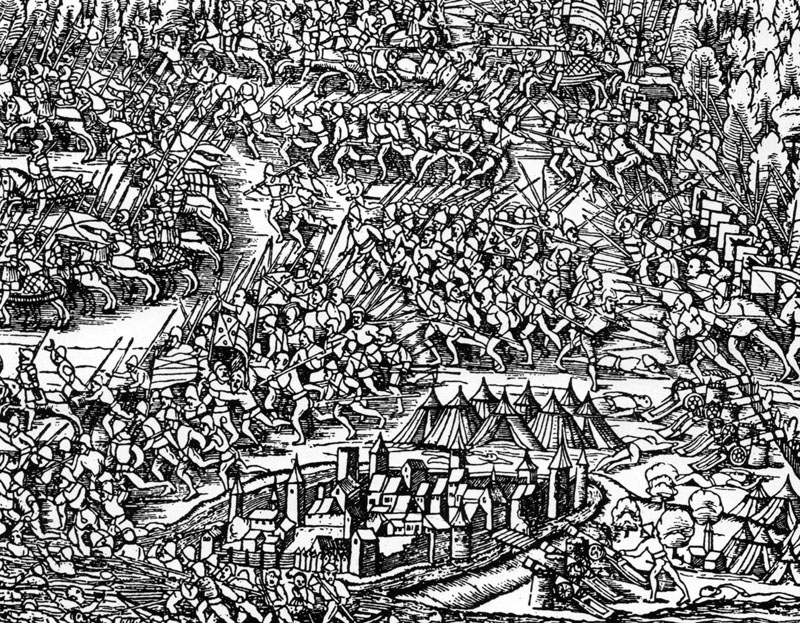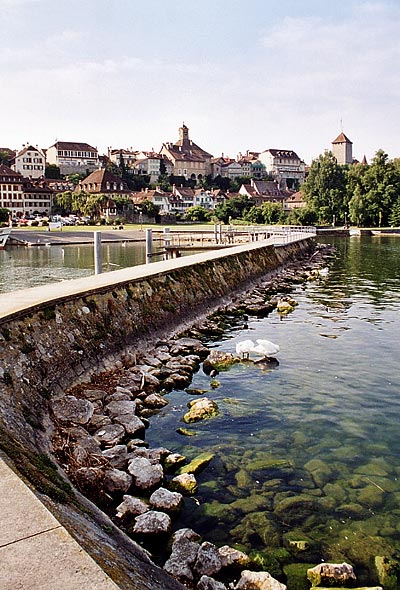|
Meyriez
Meyriez (; frp, Mêriéz ; german: Merlach) is a municipality in the district of See or du Lac in the canton of Fribourg in Switzerland. It is one of the municipalities with a large majority of German speakers in the mostly French-speaking canton of Fribourg. History Meyriez is first mentioned in 1162 as ''de Meriaco''. In 1178 it was mentioned as ''Meriei''. Geography Meyriez has an area of . Of this area, or 2.9% is used for agricultural purposes, while or 0.0% is forested. Of the rest of the land, or 88.2% is settled (buildings or roads) and or 5.9% is unproductive land.Swiss Federal Statistical Office-Land Use Statistics 2009 data accessed 25 March 2010 Of the built up area, industrial buildings made up 2.9% of the total area while housing and ... [...More Info...] [...Related Items...] OR: [Wikipedia] [Google] [Baidu] |
See (district Of Fribourg)
See or Lac District (german: Seebezirk, french: District du Lac) is one of the seven districts of the canton of Fribourg in Switzerland. Lying to the north of the canton, the district is bilingual ( French/German). Its territory enclaves the two Bernese municipalities of Münchenwiler and Clavaleyres, while its own village of Wallenbuch (now part of Gurmels) is an exclave within Bern. It has a population of (as of ). Municipalities See/Lac consists of the following seventeen municipalities: Coat of arms The blazon of the district coat of arms is ''Argent, a Lion rampant Gules crowned and armed Or on Coupeaux Vert.'' Demographics See/Lac has a population () of .. Two thirds of the population () speak German (67.1%) as their first language, French is the second most common (24.9%), there are (1.1%) who speak Italian and (0.1%) who speak Romansh. , the population was 49.9% male and 50.1% female. The population was made up of 13,164 Swiss men (40.6% of the population) and 3 ... [...More Info...] [...Related Items...] OR: [Wikipedia] [Google] [Baidu] |
Murten/Morat
Murten (German) or Morat ( French, ; frp, Morât ) is a bilingual municipality and a city in the See district of the canton of Fribourg in Switzerland. It is located on the southern shores of Lake Morat (also known as Lake Murten). Morat is situated between Neuchâtel and Fribourg and is the capital of the See/Lac District of the canton of Fribourg. It is one of the municipalities with a majority (about 75%) of German speakers in the predominantly French-speaking Canton of Fribourg. On 1 January 1975 the former municipality of Burg bei Murten merged into the municipality of Murten.Nomenklaturen – Amtliches Gemeindeverzeichnis der Schweiz accessed 9 February 2013 It was followed on 1 January 1991 by the former municipality of |
Murten
Murten (German language, German) or Morat (French language, French, ; frp, Morât ) is a bilingual Municipalities of Switzerland, municipality and a city in the See (district of Fribourg), See district of the Cantons of Switzerland, canton of Fribourg (canton), Fribourg in Switzerland. It is located on the southern shores of Lake Morat (also known as Lake Murten). Morat is situated between Neuchâtel and Fribourg and is the capital of the See/Lac District of the canton of Fribourg. It is one of the municipalities with a majority (about 75%) of German speakers in the predominantly French-speaking Canton of Fribourg. On 1 January 1975 the former municipality of Burg bei Murten merged into the municipality of Murten.Nomenklaturen – Amtliches Gemeindeve ... [...More Info...] [...Related Items...] OR: [Wikipedia] [Google] [Baidu] |
Greng
Greng is a municipality in the district of See/Lac in the canton of Fribourg in Switzerland. History Greng is first mentioned in 1349 as ''Groyn''. Geography Greng has an area, , of . Of this area, or 76.3% is used for agricultural purposes, while or 10.3% is forested. Of the rest of the land, or 14.4% is settled (buildings or roads) and or 3.1% is unproductive land.Swiss Federal Statistical Office-Land Use Statistics 2009 data accessed 25 March 2010 Of the built up area, housing and buildings made up 11.3% and transportation infrastructure made up 3.1%. Out of the forested land, 8.2% of the total land area is heavily forested and 2.1% is covered with orchards or small clusters of trees. Of the agricultural land, 60.8% is used for growing crops ... [...More Info...] [...Related Items...] OR: [Wikipedia] [Google] [Baidu] |
Haut-Vully
Haut-Vully ( frp, Hiôt-Vulyi) is a former municipality in the district of See/Lac in the canton of Fribourg in Switzerland. Until 1977, it was officially known as ''Vully-Le-Haut''. Its German name of Oberwistenlach is now little used. On 1 January 2016 the former municipalities of Bas-Vully and Haut-Vully merged to form Mont-Vully. History Haut-Vully is first mentioned around 968-85 as ''Vuisliacense''. In 1453 it was mentioned as ''Vuilliez''. Geography Haut-Vully had an area, , of . Of this area, or 70.4% is used for agricultural purposes, while or 13.2% is forested. Of the rest of the land, or 13.1% is settled (buildings or roads), or 2.5% is either rivers or lakes and or 0.7% is unproductive land.Swiss Federal Statistical Office-Land Use Statistics [...More Info...] [...Related Items...] OR: [Wikipedia] [Google] [Baidu] |
Gymnasium (school)
''Gymnasium'' (and variations of the word) is a term in various European languages for a secondary school that prepares students for higher education at a university. It is comparable to the US English term '' preparatory high school''. Before the 20th century, the gymnasium system was a widespread feature of educational systems throughout many European countries. The word (), from Greek () 'naked' or 'nude', was first used in Ancient Greece, in the sense of a place for both physical and intellectual education of young men. The latter meaning of a place of intellectual education persisted in many European languages (including Albanian, Bulgarian, Estonian, Greek, German, Hungarian, the Scandinavian languages, Dutch, Polish, Czech, Serbo-Croatian, Macedonian, Slovak, Slovenian and Russian), whereas in other languages, like English (''gymnasium'', ''gym'') and Spanish (''gimnasio''), the former meaning of a place for physical education was retained. School structure Be ... [...More Info...] [...Related Items...] OR: [Wikipedia] [Google] [Baidu] |
Kindergarten
Kindergarten is a preschool educational approach based on playing, singing, practical activities such as drawing, and social interaction as part of the transition from home to school. Such institutions were originally made in the late 18th century in Germany, Bavaria and Alsace to serve children whose parents both worked outside home. The term was coined by German pedagogue Friedrich Fröbel, whose approach globally influenced early-years education. Today, the term is used in many countries to describe a variety of educational institutions and learning spaces for children ranging from 2 to 6 years of age, based on a variety of teaching methods. History Early years and development In 1779, Johann Friedrich Oberlin and Louise Scheppler founded in Strasbourg an early establishment for caring for and educating preschool children whose parents were absent during the day. At about the same time, in 1780, similar infant establishments were created in Bavaria. In 1802, Princess P ... [...More Info...] [...Related Items...] OR: [Wikipedia] [Google] [Baidu] |
Fachhochschule
A ''Fachhochschule'' (; plural ''Fachhochschulen''), abbreviated FH, is a university of applied sciences (UAS), in other words a German tertiary education institution that provides professional education in many applied sciences and applied arts, such as engineering, technology, business, architecture, design, and industrial design. ''Fachhochschulen'' were first founded in Germany and were later adopted in Austria, Liechtenstein, Switzerland, Cyprus, and Greece. An increasing number of ''Fachhochschulen'' are abbreviated as ''Hochschule'', the generic term in Germany for institutions awarding academic degrees in higher education, or expanded as ''Hochschule für angewandte Wissenschaften (HAW)'', the German translation of "universities of applied sciences", which are primarily designed with a focus on teaching professional skills. Swiss law calls ''Fachhochschulen'' and universities "separate but equal". Due to the Bologna process, universities and ''Fachhochschulen'' award l ... [...More Info...] [...Related Items...] OR: [Wikipedia] [Google] [Baidu] |
List Of Universities In Switzerland
This list of universities in Switzerland lists all public and private higher education institutions accredited and coordinated according the ''Federal Act on Funding and Coordination of the Swiss Higher Education Sector'' (short: Federal Higher Education Act, HEdA). This includes all 12 publicly funded Swiss universities (10 cantonal universities and 2 federal institutes of technology) and a number of public and private Swiss Universities of Applied Sciences and other education institutions, as higher education institutions. The Swiss University Conference and its accreditation body the CRUS-OAQ is responsible for their recognition; an accreditation also defines the right to call itself accordingly. Universities Universities of Applied Sciences There are ten public and one private Universities of Applied Sciences (or german: Fachhochschule (FH), french: Haute école specialisée (HES), and it, scuola universitaria professionale (SUP)) in Switzerland. ;Public *Bern Univers ... [...More Info...] [...Related Items...] OR: [Wikipedia] [Google] [Baidu] |
Full-time Equivalent
Full-time equivalent (FTE), or whole time equivalent (WTE), is a unit that indicates the workload of an employee, employed person (or student) in a way that makes workloads or class loads comparable across various contexts. FTE is often used to measure a worker's or student's involvement in a project, or to track cost reductions in an organization. An FTE of 1.0 is equivalent to a full-time worker or student, while an FTE of 0.5 signals half of a full work or school load. United States According to the Federal government of the United States, FTE is defined by the Government Accountability Office (GAO) as the number of total hours worked divided by the maximum number of compensable hours in a full-time schedule as defined by law. For example, if the normal schedule for a quarter is defined as 411.25 hours ([35 hours per week * (52 weeks per year – 5 weeks' regulatory vacation)] / 4), then someone working 100 hours during that quarter represents 100/411.25 = 0.24 FTE. Two employ ... [...More Info...] [...Related Items...] OR: [Wikipedia] [Google] [Baidu] |
Atheism
Atheism, in the broadest sense, is an absence of belief in the existence of deities. Less broadly, atheism is a rejection of the belief that any deities exist. In an even narrower sense, atheism is specifically the position that there no deities. Atheism is contrasted with theism, which in its most general form is the belief that at least one deity exists. The first individuals to identify themselves as atheists lived in the 18th century during the Age of Enlightenment. The French Revolution, noted for its "unprecedented atheism", witnessed the first significant political movement in history to advocate for the supremacy of human reason.Extract of page 22 In 1967, Albania declared itself the first official atheist coun ... [...More Info...] [...Related Items...] OR: [Wikipedia] [Google] [Baidu] |
Agnosticism
Agnosticism is the view or belief that the existence of God, of the divine or the supernatural is unknown or unknowable. (page 56 in 1967 edition) Another definition provided is the view that "human reason is incapable of providing sufficient rational grounds to justify either the belief that God exists or the belief that God does not exist." The English biologist Thomas Henry Huxley coined the word ''agnostic'' in 1869, and said "It simply means that a man shall not say he knows or believes that which he has no scientific grounds for professing to know or believe." Earlier thinkers, however, had written works that promoted agnostic points of view, such as Sanjaya Belatthaputta, a 5th-century BCE Indian philosopher who expressed agnosticism about any afterlife;Bhaskar (1972). and Protagoras, a 5th-century BCE Greek philosopher who expressed agnosticism about the existence of "the gods". Defining agnosticism Being a scientist, above all else, Huxley presented agnos ... [...More Info...] [...Related Items...] OR: [Wikipedia] [Google] [Baidu] |




.jpg)

